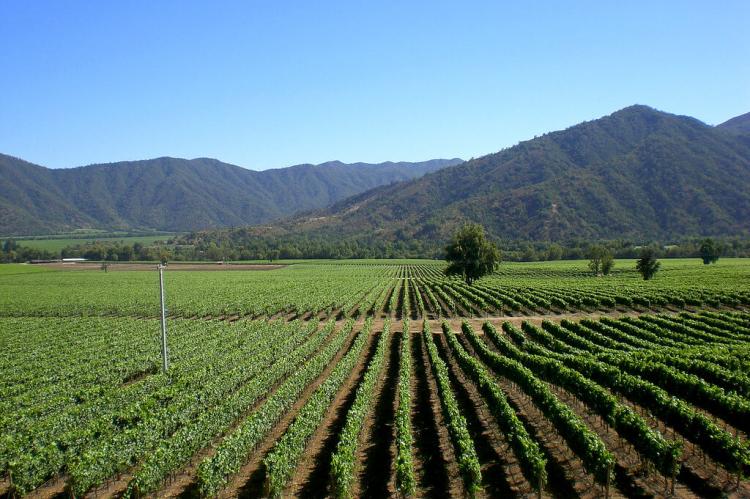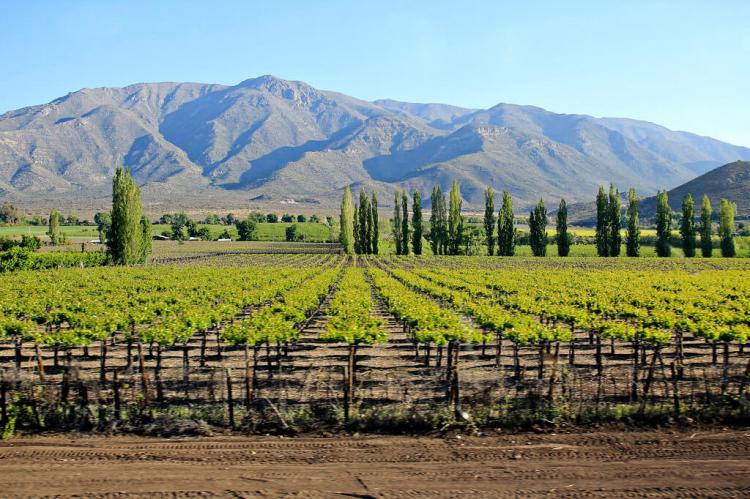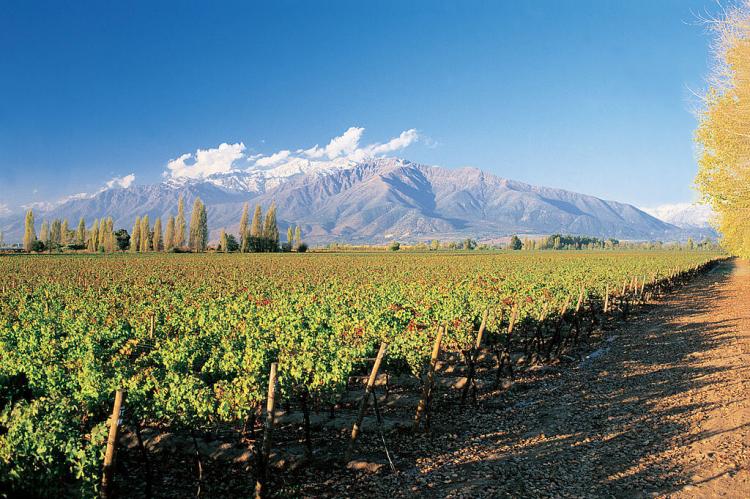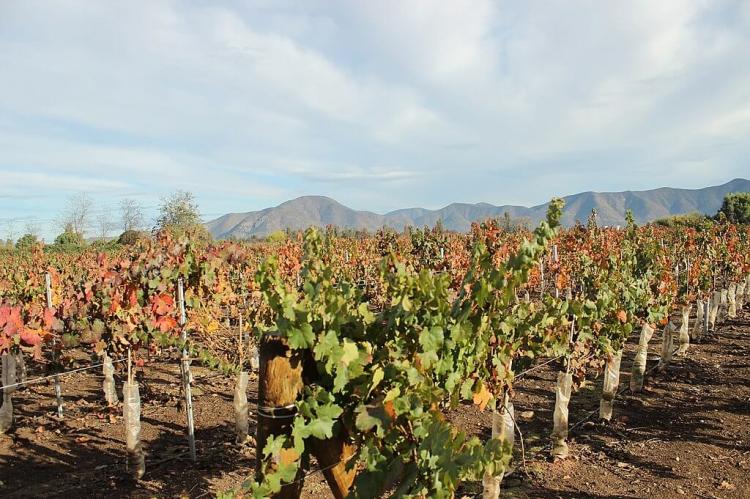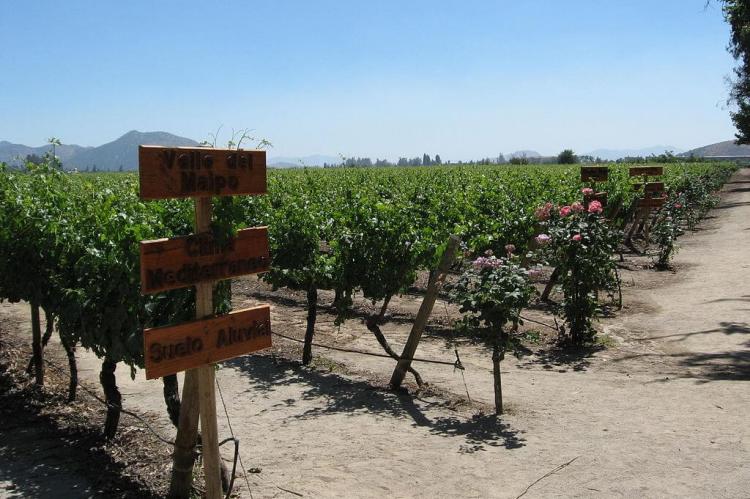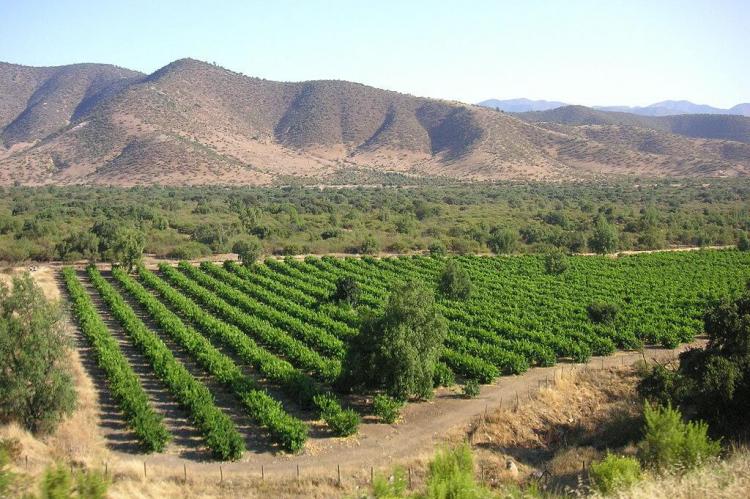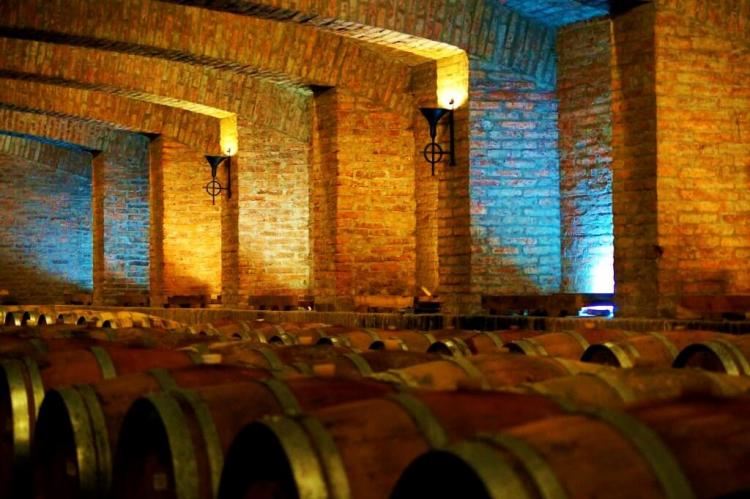Chile's Maipo Valley: A Journey Through the Heart of Chilean Wine Culture
Nestled amidst Chile's dramatic landscapes, the Maipo Valley is a beacon of viticultural excellence, earning its place as one of South America's most esteemed wine-producing regions. This historic valley traces its winemaking roots back to the very birth of Chile's wine industry.
Chile's Maipo Valley: A Journey Through the Heart of Chilean Wine Culture
Nestled amidst the dramatic landscapes of Chile, the Maipo Valley stands as a beacon of viticultural excellence, earning its place as one of South America's most esteemed wine-producing regions. Revered as the "Bordeaux of South America," this historic valley traces its winemaking roots back to the very birth of Chile's wine industry, serving as the cradle of viticulture in the country.
Historical and Cultural Significance
The Maipo Valley is a living testament to Chile's rich history and cultural heritage, woven intricately into the fabric of its sun-kissed vineyards. Its roots trace back to the 1540s when the first grapevines were planted around Santiago, marking the nascent stages of Chilean winemaking. However, it was not until the 1800s that viticulture in the region truly began to take root and flourish, catalyzing a transformation that would shape the valley's destiny as a world-renowned wine-producing region.
Throughout the centuries, the Maipo Valley has borne witness to the ebb and flow of Chile's winemaking evolution, reflecting the resilience and ingenuity of its people. The vineyards, steeped in tradition and heritage, serve as custodians of the valley's storied past, each vine a silent witness to the passage of time and the enduring legacy of winemaking craftsmanship.
Moreover, the Maipo Valley holds a special place in Chilean culture, symbolizing national pride and identity. Its wines, revered both domestically and internationally, embody the essence of Chilean terroir and winemaking excellence, garnering accolades and acclaim on the global stage.
Geographical and Terroir Diversity
The Maipo Valley, spanning from Santiago, Chile's bustling capital, to the majestic Andes Mountains in the east and the Pacific coast in the west, showcases a rich tapestry of microclimates and terroirs. Divided into three distinct subregions—Upper Maipo, Central Maipo, and Lower Maipo—the valley's wines reflect the unique interplay of altitude, climate, and soil.
Integral to the Maipo Valley is Chile's Central Valley, which encompasses a mosaic of wine-producing regions, including Maipo Valley, Colchagua Valley, Maule Valley, and Curicó Valley. Celebrated for its premium wines, especially Cabernet Sauvignon, Maipo Valley is a gem within the Central Valley's viticultural crown.
While Maipo Valley shines, it's important to recognize the broader contribution of the Central Valley to Chile's wine industry. With its favorable climate, diverse terroir, and extensive vineyard acreage, the Central Valley nurtures a spectrum of grape varieties, from iconic Cabernet Sauvignon and Carmenère to versatile Merlot, Chardonnay, and Sauvignon Blanc.
In essence, the Central Valley forms the backbone of Chile's wine industry, providing fertile ground for winemaking excellence and elevating the country's global standing as a premier wine producer.
Upper Maipo
The Upper Maipo subregion stands as a pinnacle of excellence within the Maipo Valley, boasting a pristine terroir ideal for crafting premium wines of distinction. Nestled along the eastern foothills of the Chilean Andes, this picturesque landscape is characterized by vineyards perched at elevations ranging from 400 to 800 meters (1,300 to 2,600 feet) above sea level, where they bask in the sun-drenched days and relish the cool, refreshing nights.
At these lofty altitudes, the vineyards of Upper Maipo benefit from a unique microclimate that extends the ripening period of the grapes, allowing them to develop complexity and depth of flavor. The warm days provide ample sunshine, facilitating the accumulation of sugars and phenolic compounds. At the same time, the cool nights ensure that acidity is preserved, resulting in a harmonious balance in the grapes.
One of Upper Maipo's defining features is its rocky, free-draining colluvial soils, which result from erosion and sedimentation from the surrounding Andean mountains. These rugged soils impart a distinct minerality to the wines, contributing to their bold and elegant character. The vines, stressed by the poor, porous, and rocky soil, produce grapes of exceptional quality with concentrated flavors and well-defined tannins.
Cabernet Sauvignon reigns supreme in Upper Maipo, thriving in the region's challenging yet rewarding conditions. Known for its depth, complexity, and age-worthiness, Cabernet Sauvignon from Upper Maipo is revered for its rich fruit flavors, refined structure, and lingering finish. It sets the standard for excellence in Chilean winemaking, serving as a testament to the region's unwavering commitment to quality and tradition.
Central Maipo
The Central Maipo subregion, nestled west of Upper Maipo, is a testament to Chile's rich winemaking heritage, with roots that trace back centuries. Steeped in tradition and history, this enchanting landscape is home to some of the oldest vineyards in Chile, where time-honored practices and a deep reverence for the land converge to produce wines of unparalleled quality and character.
At Central Maipo's heart lies the majestic Maipo River, whose fertile alluvial soils have nurtured vineyards for generations. Fed by the snowmelt of the Andes Mountains, the river brings life-giving water to the valley, creating a verdant oasis amidst the arid surroundings. These nutrient-rich soils, combined with the warm and arid climate of the region, provide an ideal environment for viticulture, allowing a diverse range of grape varieties to thrive.
While Cabernet Sauvignon reigns supreme in Central Maipo, its deep roots intertwined with the valley's history, the region embraces the iconic Chilean grape variety, Carmenère, with open arms. Once thought extinct following the phylloxera epidemic in Europe, Carmenère found its second home in Chile, where it flourishes in the sun-drenched vineyards of Central Maipo. Known for its distinctive herbal notes, velvety texture, and luscious fruit flavors, Carmenère adds a unique dimension to the region's wines, showcasing the diversity and innovation that define Chilean winemaking.
Lower Maipo
The Lower Maipo subregion, often called Pacific Maipo, emerges as a vibrant hub of winemaking innovation and creativity, where the art of vinification takes center stage amidst a backdrop of coastal influence and natural beauty. Nestled around the quaint towns of Isla de Maipo and Talagante, this dynamic area represents the intersection of tradition and modernity, where winemakers harness the region's unique terroir to craft wines of exceptional quality and distinction.
Unlike its counterparts in Upper and Central Maipo, where viticulture dominates the landscape, Lower Maipo distinguishes itself by emphasizing the art and science of winemaking. Here, winemakers meticulously oversee every aspect of the vinification process, from grape selection to fermentation and aging, with an unwavering commitment to excellence and innovation.
The coastal influence of the nearby Pacific Ocean plays a pivotal role in shaping the character of Lower Maipo wines. Cooling breezes from the ocean temper the warm, sunny days, preserving the grapes' natural acidity and imparting a refreshing vibrancy to the wines. This unique maritime influence adds a distinctive layer of complexity and freshness to the region's red wines, enhancing their overall balance and elegance.
While red wine production remains a cornerstone of Lower Maipo, the region also embraces experimentation with white grape varieties, particularly Sauvignon Blanc. Thriving in the region's temperate climate and sandy soils, Sauvignon Blanc grapes flourish under the gentle ocean breezes, developing crisp acidity and vibrant fruit flavors. Winemakers in Lower Maipo showcase their ingenuity and skill through a diverse range of Sauvignon Blanc expressions, from zesty and aromatic to rich and textured, highlighting the region's versatility and capacity for innovation.
Tourism and Exploration
As one of Chile's premier tourist destinations, the Maipo Valley invites visitors to embark on a journey of discovery, where each vineyard and winery offers a glimpse into the region's rich winemaking heritage and unparalleled natural beauty. From the iconic sights of the Andes to the tranquil charm of the Pacific coast, the valley promises an array of experiences to delight the senses and inspire the soul.
In conclusion, the Maipo Valley is a testament to Chile's winemaking prowess and cultural heritage. Centuries of tradition and innovation converge to produce wines of unparalleled quality and distinction. As visitors traverse its vine-clad hills and verdant valleys, they are immersed in a world of exceptional beauty and sophistication, where every bottle tells a story of passion, craftsmanship, and the enduring spirit of the land.
